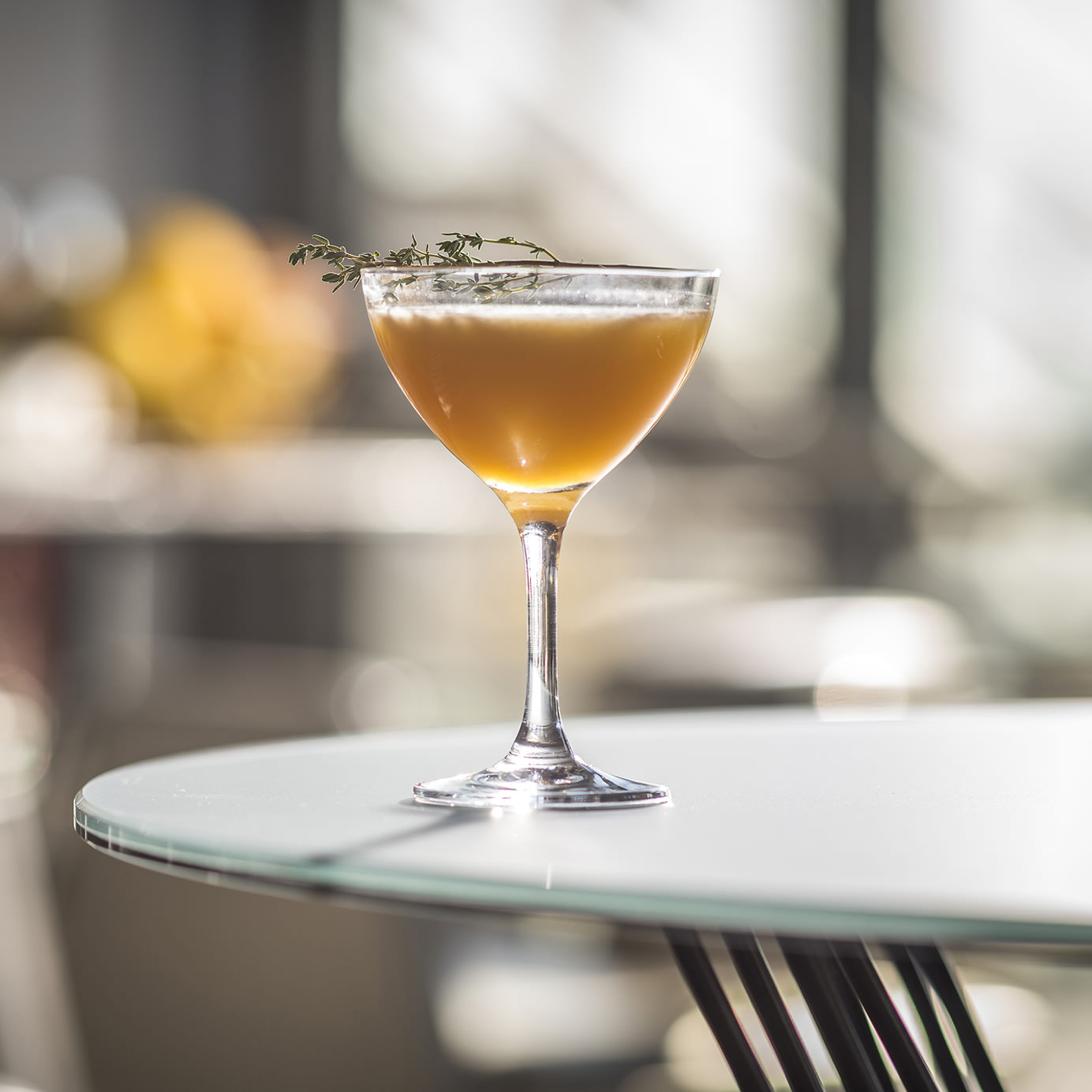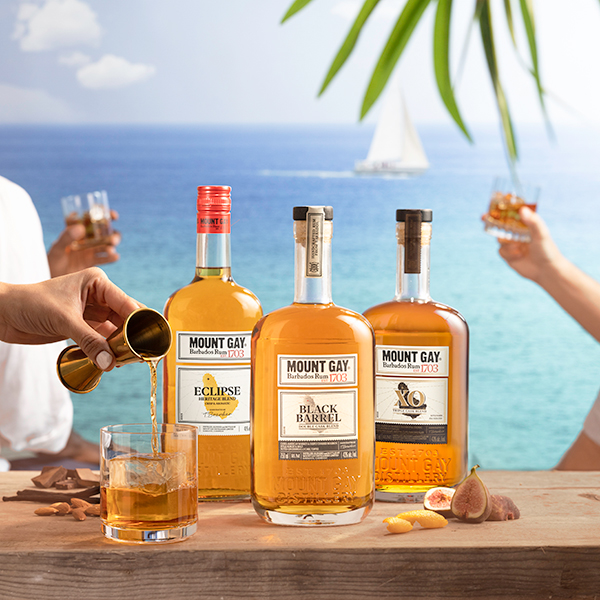Your great-grandmother was probably a pretty cool lady. If she lived in New York, she may have sipped an exciting new cocktail called a Bloody Mary, which, as the story goes, was invented in the 1930s at the St. Regis hotel’s famed King Cole Bar (named for the iconic 1908 mural on one of its walls). Not far away, great-granddad might have sidled up for a whiskey at The Waldorf Astoria’s sleek Bull and Bear Prime Steakhouse, then a men’s-only establishment.
The early glamour of hotel bars like the King Cole, Bull and Bear, or the gold-crusted Bemelmans Bar at the Carlyle Hotel, also in NYC, belies what became of many American hotel bars in the latter half of the 20th century: grim, gray, and sparsely populated.
Only a few years ago, a top American bartender would have thought long and hard about a role on the team of a hotel bar. Now industry leaders like Meaghan Dorman, of Raines Law Room in NYC’s William Hotel, express excitement at the chance to open a bar in a hotel. “It is a chance to make something that was once great, great again,” Dorman says.
How did the hotel bar go from hotspot to last resort to cutting-edge cocktail destination in a few generations? And what does its rebirth mean for the tiny, “speakeasy-style” cocktail dens that recently revolutionized modern mixology?
The most influential living barman, Dale DeGroff (also known as “King Cocktail”), has spent decades studying (and, in many cases, creating) American cocktail history. “After Prohibition, there was very little skilled labor left in America,” DeGroff explains, “And the gangsters that ran the alcohol industry didn’t go out of business, they just got legit.” The industry was tainted, making it difficult to solicit new talent.
Then, from the 1940s to the ’60s, labor unions expanded into hotels for the first time and budding technological advances reduced bartenders’ incentives to innovate. Soda guns pumping fluorescent sour mix stood in for fresh lemons and limes. “Though the bars were still fun, none of them used quality ingredients,” DeGroff says.
Spirits and travel author Georgette Moger agrees. “Everybody was still in the hive mindset where you order a safe, standby beverage,” Moger says, “You would never see egg-white cocktails, or even heady ginger drinks” on mid-century hotel bar menus.
Meanwhile, across the pond, the American Bar at London’s iconic Savoy Hotel was steadily building its reputation as a world-class institution defined by pre-Prohibition-era, American-style cocktails. At the Savoy, one of Europe’s first celebrity bartenders, and certainly Europe’s first female celebrity bartender, Ada Coleman, regaled guests from around the world with theatrical bravado.
Throughout the latter half of the 20th century, as intercontinental travel became increasingly accessible, many such establishments began popping up throughout Europe. Hotel groups opened new outposts in new cities for this jet set.
“The film ‘La Dolce Vita’ [1960] and others like it created an international interest in the European way of life, and brought many people to Italy,” Agostino Musichini, head bartender of Bar Stravinskij at the Hotel de Russie in Rome, says.
In the 1960s and ’70s, Musichini says, Rome had a hotel bar boom. Though basic bars already existed, this was the first time that Italian bartenders had an opportunity to regularly serve wealthy travelers and celebrities.
“In Rome, Venice, Turin, and so forth, restaurateurs and hoteliers created the aperitivo tradition,” Musichini says. Punctuated by Americanos and Negronis, aperitivo is now a hallmark of Italian drinking culture.
In the early 1970s, in California, the roots of America’s culinary revolution began, highlighting the importance of fresh ingredients and seasonality. Cocktails eventually followed suit, casting off sour mixes and artificial flavors.
DeGroff took over the bar program at New York’s Rainbow Room in 1987. Over the course of his tenure there, he revolutionized the way bartenders around the world approached cocktails.
In 2000, standing on DeGroff’s shoulders, a man named Sasha Petraske opened his groundbreaking Milk & Honey bar in Manhattan’s Chinatown. This bar not only juiced lemons and limes to order, but also returned to an aesthetic, process, and manner that came to be known as modern speakeasy-style bartending. Bars such as PDT and Death & Co., tiny NYC cocktail dens with similarly innovative drinks, arrived soon thereafter.
In 2005 in lower Manhattan, Audrey Saunders launched Pegu Club. It was not in a hotel, but Pegu Club defined Saunders’ career. What many do not know is that she also reopened the newly renovated Bemelmans Bar sometime before, at the encouragement of her mentor, DeGroff.
Now, worldwide, cocktails have never been more exciting. New bars open constantly. Patrons have never been savvier, and their expectations have never been higher.
That said, many establishments with strong followings and longstanding reputations for quality are struggling. New, ambitious bars often close within a year or two. Rapidly soaring rents plus heightened competition mean it isn’t enough to simply serve a good cocktail anymore.
“Great drinks are no longer constrained to cramped bars with menus clipped onto a sheet of wood,” Steven Bloom, who runs The Bar Room in Manhattan’s Beekman Hotel, says.
America is back in the business of creating phenomenal hotel bars. They are often open early for business and dining alike, transitioning throughout the day to become more rambunctious by nightfall with live music and events. Unlike many independent operations, hotel groups have ample resources to invest in the best spirits, glassware, and real estate.
“You can’t get the grandeur of the lobby bar of the Ace [Hotel in NYC], and you can’t get a view like that of The Crown at the top of 50 Bowery Hotel,” restaurateur David Massoni says. “The product in the glass isn’t necessarily different, but in a symbiotic relationship with a hotel, you can create these jewel boxes as compared to your neighborhood cocktail bars.”
Should you visit Xander Bar in St. Petersburg’s Four Seasons Hotel, Dandelyan in London’s Mondrian Hotel, or Westlight in Brooklyn’s William Vale Hotel, you’ll experience a captivating setting, spacious and comfortable seating, and accommodating service. And you’ll have cocktails that rival the best at any high-class, independent cocktail bar.
It is a tragedy to imagine a future where privately owned exciting cocktail lounges are in the minority, overshadowed and outmuscled by well-funded hotel groups. But hotel bars are also our past. One model is not more “authentic” than the other. These days our coupes runneth over, filled to the brim with history and progress, all in one drink.

